Where to Sell Crystals: A Comprehensive Guide
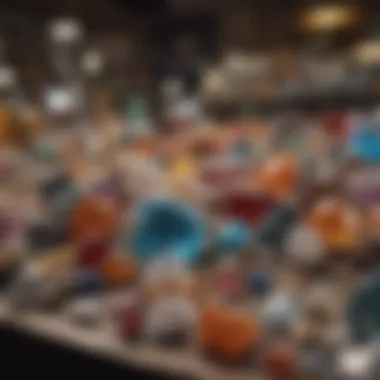

Intro
Selling crystals is more than a mere transaction; it’s a blend of art, science, and history. As collectors become increasingly invested in their hobbies, the question of where to sell becomes paramount. The options range from online marketplaces to local artisan fairs, and understanding these venues requires some insight into their unique characteristics. In this article, we will explore the varied avenues for selling crystals, touching on platforms that cater to different audiences and priorities.
Crystals themselves have garnered global interest, symbolizing everything from metaphysical properties to aesthetic appeal. Enthusiasts—whether they’re hobbyists or seasoned collectors—often find themselves in a maze when it comes to pricing, marketing, and navigating legal considerations. This guide aims to shine a light on these pathways for sellers, ensuring that they can make well-informed decisions when it comes to showcasing their collections.
As we venture deeper into the topic, notable sub-themes such as featured collectibles and identification techniques will also be explored, adding layers of depth to the overall understanding of the crystal market. By the end, readers should be equipped with the knowledge necessary not only to sell their crystals effectively but also to appreciate the broader context in which these beautiful stones exist.
Understanding the Crystal Market
When it comes to selling crystals, grasping the nuances of the market is absolutely crucial. For enthusiasts and collectors, understanding this market paves the way to informed decisions about pricing, inventory selection, and targeting the right audience. This section will delve into the fascinating dynamics of the crystal market, providing insights into its history, current trends, and how each aspect influences potential sales.
Historical Context
To appreciate the current state of the crystal market, it’s essential to look back at its roots. Crystals have been cherished for millennia, utilized not just for their beauty but also for their reputed metaphysical properties. Ancient civilizations, from the Egyptians to the Chinese, incorporated various stones into their cultures, which ascribed meanings and uses that endure today. For instance, rose quartz has long been regarded as a symbol of love and healing, while amethyst was treasured by royalty due to its perceived abilities to ward off intoxication.
As we moved into the modern age, the rise of the New Age movement in the late 20th century sparked a renewed interest in crystals. Suddenly, people sought these stones not only for decoration but as tools for personal growth, spiritual enhancement, and alternative healing. The narrative around crystals evolved, transforming from mere commodities into essential elements of a lifestyle for many. Understanding this historical undercurrent helps sellers navigate the market with an eye toward contemporary values and collectors’ desires.
Current Trends
Today, the crystal market is thriving, fueled by both online and offline platforms. The current trends indicate a growing appreciation for sustainable and ethically sourced crystals. Consumers are now more conscientious, wanting to ensure that their purchases are responsible and support good practices.
Another pertinent trend is the integration of crystals into home decor and wellness routines. Crystals are no longer just found in gemstone shops; they’re in boutiques, wellness centers, and even online retailers like Etsy and Amazon. Collectors are increasingly seeking unique specimens, driving a demand for rare crystals that tell a story—whether through their formation, color, or provenance.
Interestingly, the popularity of social media, especially platforms like Instagram and TikTok, has significantly impacted how crystals are marketed and sold. Influencers showcase their collections with vibrant aesthetics, prompting unexplored audiences to consider crystals not just as collectibles but as integral parts of self-expression.
"The crystal market, much like the stones themselves, is multifaceted. Understanding its evolving landscape can be the difference between simply selling and thriving in this vibrant community."
Online Platforms for Selling Crystals
In today's digital age, the online marketplace presents a golden opportunity for anyone looking to sell crystals. Not only does it facilitate a broader reach, but it also offers various ways to connect with potential buyers. With the sheer volume of users on these platforms, it's important to thoroughly understand the dynamics, advantages, and even challenges that come with utilizing online spaces. When selling crystals, capitalizing on online platforms can help maximize visibility and profitability.
E-commerce Websites
E-commerce websites have carved themselves a niche in the crystal-selling landscape. These platforms allow sellers to present their products to a vast audience without the geographical constraints often faced in traditional retail. Choosing the right e-commerce platform can significantly affect the sales experience.
Etsy
Etsy, known as the artisan's marketplace, has a reputation for connecting crafty individuals with buyers interested in unique, handmade, or vintage items. For crystal sellers, Etsy provides a tailored audience that appreciates the intrinsic value of crystals. What makes Etsy beneficial is its emphasis on personal storytelling. Sellers can share the narratives behind their crystals, which often resonates with buyers looking for more than just an object. However, competition is fierce, and standing out necessitates good marketing strategies and the commitment to high-quality presentations.
Amazon
Amazon is the giant in the online retail world. For crystal sellers, it provides access to an enormous audience and has an efficient logistics system that can be advantageous for shipping. One unique feature of Amazon is the option for sellers to use Fulfillment by Amazon (FBA), meaning they can send their products to Amazon's warehouses, and the company handles storage, packing, and shipping directly. While it offers broad exposure, sellers must also navigate Amazon's commission structure and may face challenges such as price wars that can drive down profitability.
eBay
eBay stands out for its auction-style selling format, providing sellers with the option to sell their crystals to the highest bidder. One attractive aspect of eBay is its established user base; it contains a plethora of seasoned buyers and collectors who are often in the market for unique crystals. Sellers can also expand their marketing by creating listings with detailed information, making it an engaging platform for crystal enthusiasts. However, fees can add up, and selling via auction may not always yield the best price, especially if the crystal doesn't attract enough bids.
Social Media Marketplaces
Social media has transformed how buyers and sellers connect. Platforms like Facebook and Instagram provide an interactive space where sellers can engage directly with their audience, making the buying experience often feel more personal and tailored.
Facebook Marketplace
Facebook Marketplace leverages the social network’s existing connections to facilitate local sales. Sellers can list their crystals for free, allowing them to keep more of their profits. The ease of communication with potential buyers through Messenger can build trust. Additionally, the platform allows for sales in specific groups dedicated to crystals and healing, which can enhance visibility among niche customers. However, the lack of a secure payment system may pose risks, as transactions generally occur outside the platform itself.
As a visually-centric platform, Instagram is a haven for showcasing beautiful crystal photography. Sellers can use appealing images to grab attention and link to their sales channels. The use of hashtags can help reach audiences interested in crystals, and the Stories feature allows for engaging, real-time interactions. While Instagram's dynamic nature can foster community, successful selling often relies on a consistent posting schedule and understanding of social media marketing. The challenge lies in the platform’s evolving algorithms, which can affect post visibility.
Specialized Crystal Selling Sites
For those deeply entrenched in the crystal community, specialized selling platforms can provide a more focused environment to connect with fellow enthusiasts and collectors. These avenues often cater specifically to crystal lovers, making the sale feel more personal.
Crystal-specific platforms
These websites are dedicated solely to crystal sales, showcasing a curated selection of products aimed at a targeted audience. Such platforms often attract buyers who are knowledgeable about crystals, making them more likely to appreciate the value of high-quality specimens. However, competition can be tough on these higher-end sites, and they may charge fees that need to be factored into your pricing strategy.
Niche forums
Crystal forums offer a unique space to sell crystals, where enthusiasts gather to discuss the latest trends and share advice. Selling here allows for a community-driven experience. Sellers can often post listings while interacting with potential buyers in a more informal setting, fostering trust. However, niche forums may have limited audiences compared to broader platforms, so sellers may need to explore multiple avenues to reach a wider market.
Selling crystals online can be rewarding, but understanding the unique attributes of different platforms is crucial for success.
Local Avenues to Sell Crystals
Exploring local avenues to sell crystals can unlock a treasure trove of opportunities for enthusiasts and collectors alike. While online platforms have become a mainstay, engaging with the local community adds a personal touch to transactions and often fosters deeper connections. Plus, selling locally allows sellers to bypass some of the logistical headaches that come with shipping. By tapping into local markets, craft fairs, and shops, sellers can showcase their crystals in person, allowing potential buyers to appreciate their qualities firsthand.
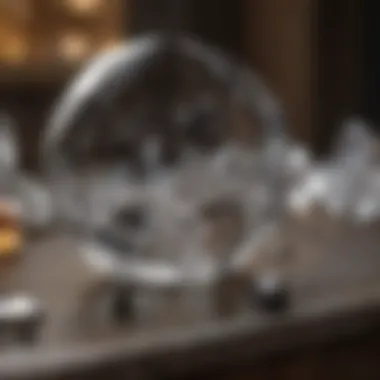
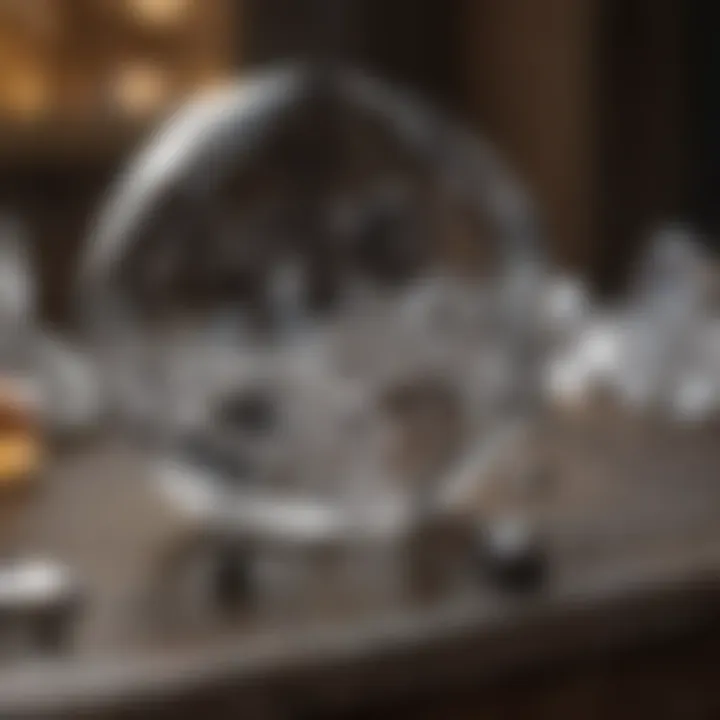
Moreover, local avenues typically attract a specific clientele that may appreciate the craftsmanship and unique stories behind each piece. This setting also invites casual interactions, making it easier to establish a rapport with buyers, which can lead to loyal customers. The blend of personal engagement and localized selling can set a seller apart in a saturated market, ultimately benefiting both the seller and the buyer.
Craft Fairs and Markets
Craft fairs and markets serve as vibrant ecosystems where sellers can showcase their crystals among other artisanal crafts. These events are perfect for engaging with a diverse audience, often drawing individuals who have an intrinsic interest in unique and handmade items. At such gatherings, sellers have the chance to share the backstory of each crystal, which can add significant value in the eyes of customers. The tactile experience of handling crystals can not be understated—buyers can appreciate the texture, color, and weight, making them more likely to commit to a purchase.
Participation in local craft fairs also allows sellers to gain insights into pricing strategies by observing competitors. Networking at these events can lead to future collaborations and even mentorship opportunities in the crystal-selling community. That said, there's always a level of competition, so being well-prepared to draw in customers through engaging displays or informative materials is crucial.
Retail Shops and Galleries
Retail shops and galleries present another venue for selling crystals, often lending a more polished environment. It is essential to approach these establishments with a solid pitch and a clear idea of how the crystals can enhance their inventory. Many shop owners appreciate a well-curated selection, so showcasing unique pieces can make a lasting impression.
Consignment options
Consignment options represent a flexible arrangement where a seller places their crystals in a retail shop while retaining ownership. This arrangement allows sellers to potentially reach new customers without hefty upfront costs. A critical characteristic of consignment is that sellers only receive payment when their items sell, which can be a double-edged sword. On one hand, it reduces risk for shops, creating a potentially welcoming environment to try out new products. On the other hand, it can be frustrating for sellers if their items don’t move quickly.
This option is particularly beneficial because it allows sellers to focus on creation and curation without overwhelming inventory management. However, sellers should be aware of the shop’s terms regarding commission fees and the duration they are willing to keep the products on display.
Wholesale opportunities
Wholesale opportunities offer an avenue for scaling crystal sales, especially for those looking to reach a broader audience. In this arrangement, sellers provide their crystals in bulk to retail shops at a discounted rate. This can be a lucrative channel, as it often involves larger orders, allowing sellers to clear out inventory while establishing recurring relationships with shop owners.
A key benefit of wholesale is the potential for long-term financial stability. Once a partnership is formed, retailers can turn to the seller as a reliable source for restocking. However, sellers should be ready to offer competitive pricing to appeal to shop owners and should also consider the implications this has on profit margins. Understanding the market demand, and adjusting the inventory supply accordingly, maximizes potential benefits.
Community Events
Community events, such as local fairs and neighborhood gatherings, can enrich the selling experience for crystal sellers. These events are sometimes more informal, attracting a diverse range of individuals, making them less competitive than specialized markets. Local attendees often feel more inclined to purchase from familiar faces within their community, adding a layer of trust to the transaction.
Market days
Market days offer a consistent opportunity for sellers to connect with buyers in a community-focused environment. These events typically feature various local vendors, providing a festive atmosphere that encourages purchasing. A distinctive feature of market days is their regular scheduling—this allows sellers to establish a recognizable presence within the community. It’s also a chance to gather customer feedback and spot emerging trends.
On the downside, market days might require more effort in terms of logistics and setup. Having to cart merchandise and set up a display can be labor-intensive, but the trade-off often yields rewarding interactions and potentially repeat customers.
Local festivals
Local festivals can be a fantastic platform for selling crystals, usually coinciding with celebrations that pull together foot traffic in large numbers. These events create an atmosphere filled with excitement, resulting in buyers more likely to splurge on unique finds. A key element of local festivals is their ability to transform an ordinary selling day into a unique experience. Sellers can leverage the festive mood to create eye-catching displays that resonate with attendees.
Yet, while these events can be beneficial, they often come with challenges like increased competition. Festivals can sometimes lead to oversaturation, as numerous vendors cater to the same audience. Sellers should prepare unique selling propositions to stand out among the crowd, taking advantage of the spirit of community while also promoting the distinct qualities of their crystals.
Evaluating the Value of Crystals
Understanding how to evaluate the value of crystals is crucial for anyone looking to sell them. Knowing what factors contribute to the worth of a crystal not only empowers sellers but also enhances their credibility within the market. As a seller, being knowledgeable about evaluation lays the groundwork for fair pricing and fosters trust with potential buyers. In the end, whether you are a seasoned seller or just starting your journey, grasping the nuances of crystal valuation is an invaluable skill that can lead to better sales and customer satisfaction.
Criteria for Assessment
When assessing the value of crystals, there are three primary criteria that should never be overlooked: rarity, quality, and size. Each plays a significant role in determining the overall value and desirability of individual pieces.
Rarity
Rarity is a key element that influences the value of a crystal. Simply put, the rarer a crystal, the more function it may have in terms of demand and pricing. Many collectors are willing to pay top dollar for crystals that are hard to come by. For instance, stones like Painite, known for its scarcity, can command high market prices. The unique feature of rarity is that it isn't just about how common a crystal is, but also about its geological origins and historical significance. A crystal that's rare in one location may be abundant in another but still carries a premium due to the lore or story attached to it.
"Rarity doesn't just make a crystal valuable; it tells a story, and collectors love a good tale."
Quality
Quality pertains to the clarity, color, and overall condition of the crystal. High-quality crystals are often transparent, with vibrant colors and minimal inclusions. For example, a high-quality amethyst will have deeper purple hues and fewer blemishes than its lower-quality counterparts. The strong characteristic of quality ensures that buyers are not just investing in a pretty rock, but in something that retains its appeal over time. However, defining quality can be subjective, as some may prefer crystals with unique inclusions or natural imperfections, adding an individuality that mass-produced pieces lack.
Size
Size is another critical factor in valuation. Generally, larger crystals are more valuable due to their visual impact and the perception of rarity attached to substantial pieces. Collectors often seek out larger specimens for display or use in crystal healing. However, size is not the be-all-end-all; smaller, high-quality crystals can sometimes fetch more than larger, inferior ones. The balance of size with other criteria determines the most lucrative path for sellers.
Resources for Appraisal
To make informed decisions about pricing and valuing crystals, sellers should consult a variety of resources available for appraisal. Proper guidance can not only validate their personal assessments but also provide an expert's eye when it comes to pricing.
Guidebooks
Guidebooks serve as a great starting point for crystal valuation, providing essential information on different types of crystals and their characteristics. These resources often contain images and chapters that categorize stones by color, shape, and rarity, giving sellers a solid foundation for understanding market value. One key aspect of guidebooks is that they are often updated regularly to reflect current trends in the market. This means that a savvy seller can benefit from having the latest edition on hand to ensure their pricing is competitive.
Professional appraisers
Engaging a professional appraiser can elevate the selling process significantly. These experts bring a wealth of knowledge and experience, offering a trained eye that might spot characteristics a seller could overlook. Additionally, they often have connections within the industry that can help in selling the crystals. However, hiring an appraiser can come with costs, and not all sellers may be able to afford this kind of expense. Thus, while consulting professionals is beneficial, it’s wise to weigh the costs against potential gains from the appraisal prior to moving forward.
Marketing Strategies for Crystal Sales
In the expansive world of crystal sales, marketing strategies serve as the backbone of a successful endeavor. Without effective marketing, even the most stunning crystal collections can linger unsold, gathering dust instead of delighting collectors. In this section, we will explore key strategies that can elevate a seller’s presence and entice potential buyers. From creating a compelling online presence to engaging customers directly, mastering these strategies can lead to fruitful sales and a thriving business.
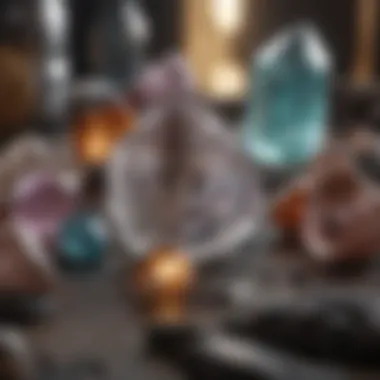
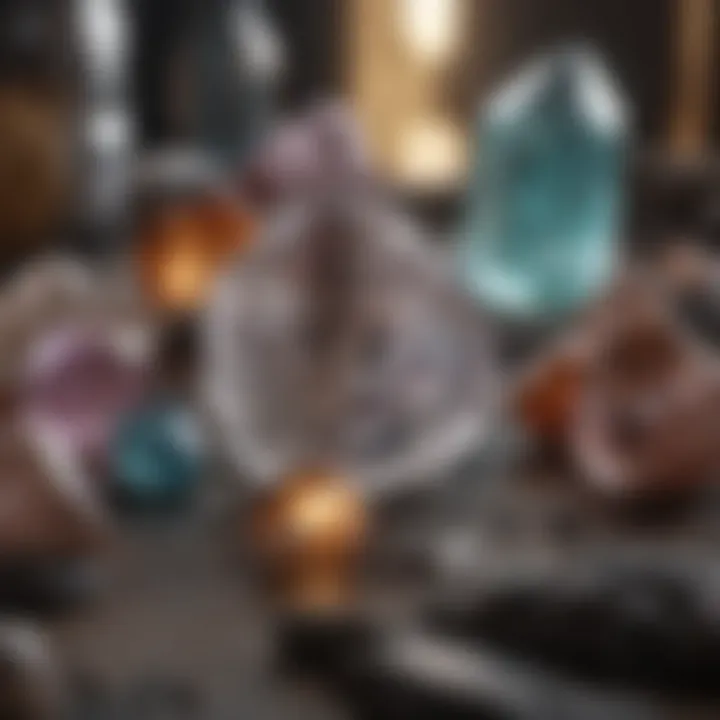
Building an Online Presence
Website creation
Creating a dedicated website is often the first step toward establishing an online presence. A personal website is not just a digital storefront; it acts as a comprehensive platform for showcasing your collection. The key aspect of this is the ability to customize your site according to your brand, presenting crystals through high-quality images and detailed descriptions. This unique characteristic makes it a beneficial choice for crystal selling since it allows sellers to curate their space without the limitations imposed by third-party platforms.
One advantage of having a dedicated website is that it enhances credibility. Customers are more likely to trust a well-designed site, which can include testimonials and an about page detailing your journey in the crystal world. However, maintaining a website requires ongoing effort, from updates to search engine optimization. Additionally, sellers must navigate startup costs and potential technical challenges. Nonetheless, the long-term benefits often outweigh these initial hurdles.
Content marketing
Content marketing plays a vital role in attracting and retaining customers. This involves creating engaging articles, blog posts, or videos that inform and educate buyers about the benefits of different crystals, their uses, and care tips. This focus on education not only garners interest but also positions you as an authority within the crystal community.
The key characteristic of content marketing is its ability to build relationships. By offering value through informative content, sellers foster trust and encourage repeat business. An exceptional feature of this strategy is its potential for organic traffic, which can significantly enhance visibility without paying for ads. However, it requires consistency and creativity to keep the audience engaged and can take time to show results, something sellers must be prepared to commit to.
Customer Engagement Techniques
Email newsletters
Email newsletters provide a direct line of communication with customers. By collecting email addresses through sign-ups on your website, a seller can send regular updates, special offers, or insights into new arrivals. This method can play a critical role in maintaining interest in your offerings and fostering a sense of community.
The characteristic of email newsletters lies in their personal touch. Customers appreciate receiving tailored content that speaks to their interests, particularly when it comes to crystals and their specific uses. Unique features include the ability to segment your audience based on past purchases, allowing for targeted promotions. However, the disadvantage is potential drop-off rates if the content is perceived as spammy or irrelevant, making it essential to maintain quality and relevance.
Social media interaction
Social media interaction is an integral part of modern marketing strategies. Platforms such as Instagram or Facebook allow sellers to connect with potential customers in real time. Sharing snippets of your collection, behind-the-scenes looks at your sourcing process, or engaging in conversations can spark interest and engagement.
The key characteristic of social media interaction is its immediacy. Sellers can quickly respond to questions or comments, building rapport with their audience. A unique advantage is the visual nature of platforms, particularly for a visually driven market like crystals. However, the downside includes the potential for overwhelming competition, as numerous sellers vie for the attention of the same audience, making it crucial to distinguish your offerings.
"Effective marketing bridges the gap between the crystals and the collectors who cherish them."
Overall, these marketing strategies emphasize the importance of maintaining a strong online presence and engaging customers meaningfully. Through continued effort in these areas, sellers can navigate the crystal-selling landscape with increased confidence and success.
Legal Considerations in Selling
When diving into the world of crystal sales, the legal landscape can seem a tad overwhelming. However, it’s crucial for sellers, whether newbies or seasoned collectors, to get a solid grip on the legal aspects to ensure a smooth sailing operation. Not only can ignorance of the law lead to potential fines or legal disputes, but understanding these considerations can also build trust with customers, making them more likely to purchase your crystals.
Licensing and Permits
Licensing requirements differ by state and country, so it’s vital to do your homework to ensure your crystal-selling venture operates within the law. Many states do not require a specific license to sell crystals privately, but if you intend to sell as a business, you might need a seller’s permit, which makes you eligible to collect sales tax.
For instance, in California, if you earn more than a certain amount from your sales, you’ll need to register as a small business. Additionally, some areas may have specific zoning laws that influence whether you can sell from home or participate in local markets. Connecting with your local chamber of commerce can shed light on the necessary licenses and permits applicable in your area.
- Research Local Requirements: Check authoritative sources for your state/country.
- Consult an Attorney: Sometimes it’s best to seek legal advice to navigate these waters smoothly.
Tax Implications
Let’s face it, taxes are the part few enjoy dealing with, but they can’t be ignored. Any profits made from selling crystals are typically subject to income tax. This means you should keep meticulous records of your sales and expenses to accurately report income on your tax returns.
Here are a few points that can help clarify tax obligations for crystal sellers:
- Sales Tax: If your jurisdiction requires it, ensure your selling platform allows for sales tax calculations.
- Deductions: You may deduct certain business expenses, like purchasing supplies and booth fees at craft fairs.
- Professional Help: Consider hiring an accountant specializing in small businesses or e-commerce to navigate this area. They can help you organize financial aspects and ensure compliance.
Understanding the legal requirements of selling crystals isn't just a recommendation—it's a necessity for running a legitimate business.
By staying informed about licensing and tax obligations, sellers not only comply with regulations but also enhance their credibility within the crystal-selling community. Taking these steps can build a foundation for sustainable growth in your crystal sales business.
Networking Within the Crystal Community
Connecting with fellow enthusiasts can be a game changer in the crystal business. Networking is not just a buzzword; it’s a lifeline that opens doors to opportunities and creates a strong support system. Sharing experiences, advice, and even leads can make a significant difference when navigating a niche market like crystals.
Benefits of Networking
- Knowledge Exchange: Rubbing elbows with other collectors or sellers can provide invaluable insights about market trends, pricing, and sourcing gems.
- Access to Resources: Through networking, it’s possible to discover reliable suppliers or unique crystals that may not be available through mainstream channels.
- Building Relationships: Regular interactions with like-minded individuals can create lasting partnerships, leading to collaborative opportunities, such as co-hosting events or sharing booth space at craft fairs.
- Receiving Feedback: Engaging with the community provides a platform to seek opinions on your collection or sales approach, invaluable in refining your business model.
When focusing on networking, it’s important to be approachable and open to sharing your own experiences too. This two-way street builds trust and encourages a spirit of collaboration.
Joining Collectors' Groups
Joining collectors' groups can significantly enrich your crystal-selling journey. These groups are often formed around specific interests, such as type of crystals, geographic locations, or selling methods.
Types of Groups to Consider:
- Local Meetups: Small gatherings can lead to personal connections, friendly discussions, and real-time market updates.
- Online Forums: Platforms like Reddit offer subreddits specifically dedicated to crystals and their enthusiasts. Here, one can ask questions, share knowledge, and trade items.
- Facebook Groups: With targeted groups for buyers and sellers, engaging in the discussion can drive more attention to your offerings.
Each of these avenues serves as a networking hub where one can not only share their passion for crystals but also create business opportunities. The key is being active, respectful, and willing to contribute information or resources. After all, it’s a community built on shared interests and mutual respect.
Attending Trade Shows
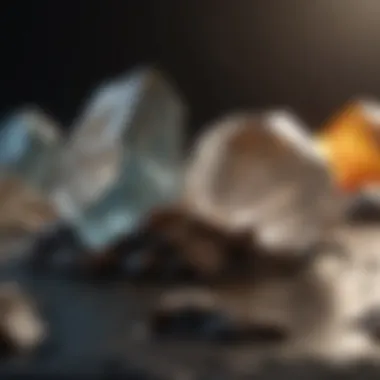
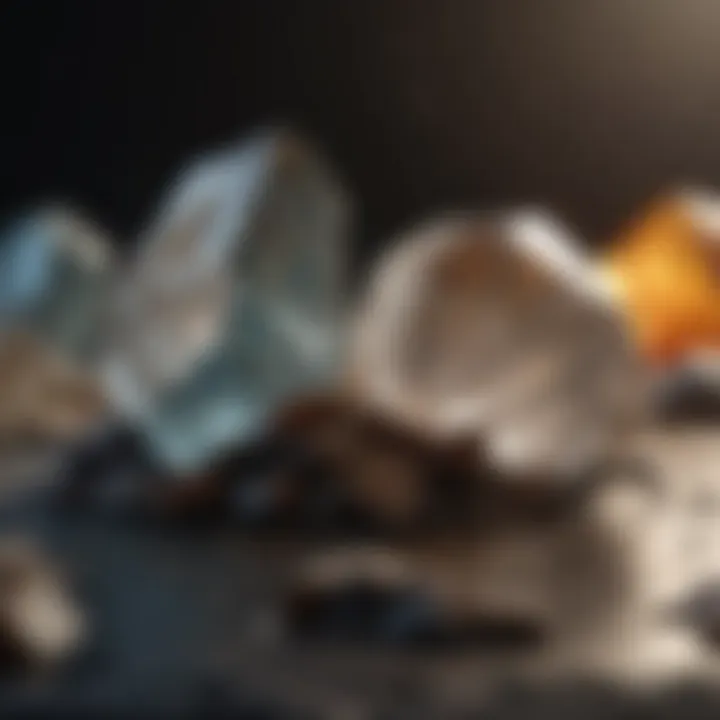
Trade shows present a unique canvas for networking within the crystal community. These large gatherings are often bustling with professionals and hobbyists looking to learn and sell. Attending these events can yield numerous benefits:
- Building Connections with Suppliers: You can meet vendors face-to-face, fostering relationships that can lead to better deals or exclusive products.
- Engaging with Customers: Direct interaction allows you to understand customer preferences and showcase your sales skills.
- Learning the Market: You can gauge the competition and current trends by observing what others offer.
- Participating in Workshops: Many trade shows also feature workshops or talks wherein industry experts share their knowledge, offering insights you might not find elsewhere.
"Trade shows are not just about selling; they’re about learning, sharing, and connecting with others who share the same passions."
Tips for an Effective Trade Show Experience:
- Always carry business cards for easy connection.
- Be open to discussions; you never know who might be sitting next to you in a presentation.
- Attend multiple events if possible to widen your network.
In summary, whether you engage with collectors in person or join online groups, networking is the crux of thriving within the crystal selling landscape. By connecting with others, sharing knowledge, and experiencing community support, crystal enthusiasts can truly uplift their selling journey.
Post-Sale Strategies
After a successful sale, the journey doesn't just end. It's like crossing the finish line of a marathon; you need to cool down and reflect on your run. Having effective post-sale strategies is essential, allowing sellers to establish lasting connections with customers while optimizing future sales. Let's break down some of the critical elements in this arena.
Customer Follow-Up
Once the transaction is completed, following up with the customer serves multiple purposes. First, it shows that you care about their experience. A simple message expressing gratitude or asking about how they liked the product can go a long way. It's not just about making a sale; it’s about creating relationships. A personal touch can make customers feel valued, stirring up their loyalty.
Consider these points for effective follow-up:
- Thank-you Notes: Sending a handwritten note with the crystal can leave an impression. It feels personal in a digital world.
- Feedback Requests: Asking what they think about the crystal provides valuable insight into customer satisfaction.
- Engagement Through Social Media: Encourage them to share pictures of their new finds online, tagging your profile. It's a free way to market your offerings while building community.
This is not just about maintaining good vibes; effective follow-up can also lead to repeat purchases. Satisfied customers are more likely to return, and word travels fast.
"Your most unhappy customers are your greatest source of learning."
— Bill Gates
Reinvestment of Profits
Once you've settled in with your customer follow-ups, it's crucial to take a moment to think about where to channel those profits. Reinvestment is a smart strategy for growth. Essentially, it’s about letting your profits work for you. This could mean several things:
- Expanding Your Inventory: Consider diversifying your collection with different crystals or quality variants. Each piece tells its story, and diverse inventory attracts a broader audience.
- Marketing Campaigns: You can explore paid ads on platforms like Facebook and Instagram to reach potential customers who might have never heard of you.
- Skill Development: Invest in yourself. Take courses in crystal evaluation to sharpen your selling skill or learn about online marketing techniques.
In the end, these steps create a cycle of improvement, allowing your crystal-selling venture to bloom. Dedicating profits back into the business not only enhances your offerings but boosts your credibility in a market that can seem saturated at times.
Challenges in Selling Crystals
Selling crystals can be a rewarding venture, but it doesn’t come without its hurdles. Understanding these challenges is key to navigating the market successfully. It’s not just about having beautiful stones—there are underlying dynamics that can impact your selling experience and profitability.
Market Saturation
The sheer volume of sellers can make the crystal market feel like a bustling bazaar. With the explosion of interest in crystals over the past decade, many enthusiasts have jumped into selling. This saturation means that standing out from the crowd requires strategies that go beyond simply showcasing your wares.
To tackle this, consider these points:
- Differentiation: Think about what makes your crystals unique. Is it the sourcing, the way you present them, or perhaps the story behind each piece?
- Quality Over Quantity: Focus on curating a collection that speaks to your audience. Rather than flooding the market with every piece, choose quality and storytelling.
- Niche Marketing: Target specific audiences like collectors of rare crystals or those interested in metaphysical properties.
With so many options, it's crucial to find your own space in the market. You might want to leverage platforms that allow you to showcase your expertise or unique connections in the crystal community.
Identifying Quality Buyers
Not all buyers are created equal; some may come in looking for a bargain, while others see value in collector-grade pieces. Thus, sifting through potential customers to find serious buyers can be laborious.
Here are some tactics to help with this:
- Engage with Your Audience: Use social media to communicate directly with potential buyers. Ask questions about their preferences. Develop a dialogue to understand their needs.
- Build Trust: Provide detailed descriptions, history, and evidence of authenticity for your crystals. People are more likely to invest in pieces that they know are genuine and well cared for.
- Utilize Feedback: Learning from your previous sales can help you identify what attracts serious buyers. Solicit testimonials and reviews to bolster your credibility.
Identifying quality buyers not only helps in making more sales but also fosters a community that appreciates your offerings. Remember, it’s not just about the sale but about building lasting connections that can lead to repeat business.
"A sale is just the beginning of a relationship, not the end of one."
Successfully selling crystals requires a blend of understanding the market saturation and engaging with buyers authentically. By addressing these challenges head-on, you’ll set yourself up for greater success in the crystal business.
The Future of Crystal Selling
The crystal-selling landscape is evolving continuously, reflecting broader shifts in economic, societal, and technological paradigms. For those who are passionate about crystals, understanding what lies ahead can be the difference between thriving and merely surviving in the market. The future of crystal selling isn’t just about keeping up — it’s about adapting to new realities, leveraging emerging trends, and catering to changing tastes. The focus here will primarily be on two critical aspects: the trends that are shaping this market and the evolving preferences of consumers.
Trends to Watch
As we step into a future saturated with connectivity, we find ourselves at the intersection of tradition and modernity when it comes to selling crystals. Here are some of the most notable trends to keep an eye on:
- Sustainable Practices: More consumers are becoming eco-conscious. Vendors who source crystals ethically and promote sustainability stand to attract a loyal customer base. Practices such as responsible mining and eco-friendly packaging could soon become standard expectations rather than mere selling points.
- Integration of Technology: Augmented reality (AR) could emerge as a game changer. Imagine customers being able to visualize how a crystal piece fits within their space right from their phones. This tech-assisted shopping experience may not just enhance engagement but also conversions.
- Customization: Personalized products continue to gain traction. Sellers who offer customizable crystal pieces or tailored recommendations may find their niche, addressing individual buyer preferences rather than pushing generic options.
- Online Community Building: Social media platforms will remain crucial. As sellers engage more with niche communities on sites like Reddit and Facebook, fostering a sense of belonging can help in retaining customers and encouraging repeat purchases.
Understanding these trends is not just about adaptation; it’s about innovation. Sellers who embrace these changes will likely be the ones leading the charge in the coming years.
Evolving Consumer Preferences
The way consumers interact with crystals is shifting, influenced by broader cultural trends and individual needs. Here are key considerations to understand these evolving preferences:
- Mindfulness and Wellness: Many buyers today view crystals as tools for enhancing well-being. Sellers should consider focusing their marketing on the healing properties associated with various stones, as well as ways to incorporate them into mindfulness practices — a growing area of interest among consumers seeking balance and tranquility in chaotic lives.
- Aesthetic Values: As well as being perceived as metaphysical tools, crystals are also objects of beauty. Sellers should highlight unique aesthetics in their offerings. Curating collections with a focus on aesthetic appeal can attract buyers looking for beautiful decor as much as for spiritual guidance.
- Authenticity and Transparency: Modern consumers are increasingly skeptical. They crave authenticity in their purchasing decisions. Sellers who can tell the story behind their crystals — where they come from and how they are sourced — are likely to resonate deeply with discerning buyers.
In summary, the future of crystal selling hinges on understanding trends and consumer shifts, intertwining them into robust business strategies. Building a relationship with customers based on trust and understanding their needs will separate the wheat from the chaff in this ever-evolving market.



